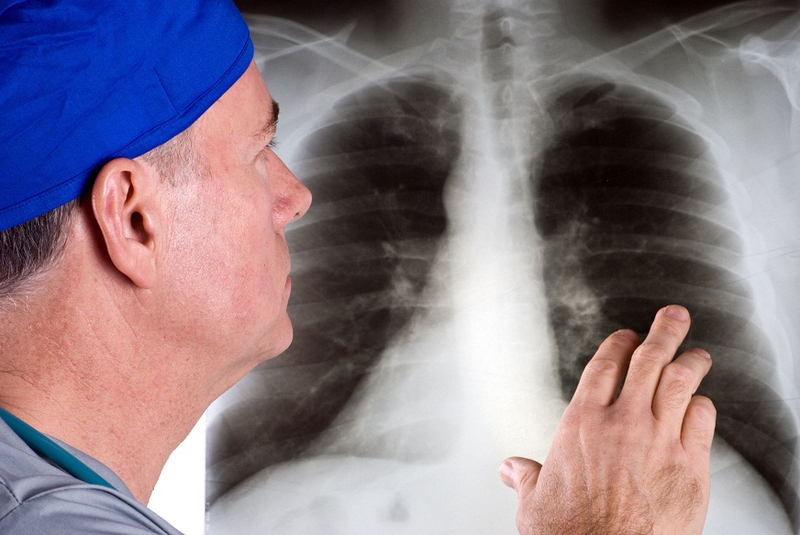Did you know that cancer is among the leading causes of death around the world, with almost nine million deaths in 2016? Among the many types of cancer, lung cancer is the most common form of cancer especially for men. More so, this form of cancer is prevalent in less developed countries.
Over the years, developing countries are able to reduce the incidence of lung cancer due to education about the risks and dangers of smoking, and various smoking cessation programs. Nonetheless, it continuously affects – and kills – millions of people around the world. Let's get more facts about it.

Incidences
In America alone, 1 in 15 people would be diagnosed at some point in their lives, mostly affecting people above 60 years old. In 2016, 224,390 people have been diagnosed with lung cancer.
The number of people diagnosed in the United Kingdom is lesser. Based on the number presented by Cancer Research in UK, there are approximately 46,000 new cases of lung cancer, making it the third most common form of cancer. Over the last decade, the incidence rate has lowered as well.
Nonetheless, the World Health Organization reported that lung cancer is responsible for 1.69 million deaths worldwide. It is also the leading cause of cancer death in Australia and will remain to be until 2017.
Causes
There are many factors that contribute to the development of lung cancer. It may run in the family, but age, lifestyle, and exposure to risk factors could contribute to lung cancer.
Among these factors, smoking is and still is the main cause of lung cancer for both small cell and non-small cell type. In fact, around 130,659 Americans died of lung cancer every year due to smoking which is also accountable for 86 percent of lung cancer cases in the UK.
Apart from smoking, secondhand smoke also accounts for about 7,330 lung cancer deaths in America based on lung cancer statistics.
Other causes of lung cancer include:
Exposure to radon or a gas produced by decaying uranium, which accounts for approximately 21,000 lung cancer deaths in America. Smokers who are exposed to radon have higher risk of developing lung cancer.
Certain occupational exposures like asbestos, coke, and uranium, which is responsible for 13 percent of lung cancer deaths in UK.
Ionizing radiation, which is responsible for 5 percent of lung cancer deaths in the United Kingdom.
Outdoor pollution, which is although minimal, responsible for one to two percent of lung cancer deaths in the US.
In other words, smoking may be the biggest factor. but exposing yourself to environmental pollutants could increase your risk, especially if you are a smoker.
Gender Differences
Believe it or not, men are more prone to develop lung cancer than women, regardless of the country.
In the United States, more men are diagnosed with lung cancer with 60.7 percent per 100,000 compared to women’s 47.7 percent. Lung cancer is also the most common cause of death among men in UK; while in Australia, more than 5,000 men are estimated to die in 2017 because of lung cancer compared to women’s 3,800 cases. Men from Hungary have higher lung cancer death rate compared to women as well.
However, the relationship between women and lung cancer are still alarming, which is why everyone should pay attention to healthy lifestyle choices.
Check out more lung cancer statistics worth knowing below.
Racial or Ethnic Differences
Apart from gender, lifestyle, and exposure to certain hazardous contents, one’s race or ethnicity also matters on the risks you will develop lung cancer.
Surprisingly, African-Americans have higher recorded lung cancer diagnosis and death compared to white men by 28 percent, despite lower exposure to cigarettes.
More than the race, men from Hungary have the highest rate of lung cancer worldwide with 76.6 percent per 100,000. Hungary also has the highest rate of lung cancer in the world, followed by Serbia and South Korea.
Survival Rate
Unfortunately, the lung cancer five-year survival rate is lower compared to other top cancer deaths. Nonetheless, it has 55 percent five-year survival rate if the condition is still within the lungs. Otherwise, the survival rate is only 16 percent if diagnosed at an early stage and four percent if the cancer spread to the other organs. Moreover, more than half die within one year after being diagnosed.
The case is somewhat different in UK. Lung cancer statistics showed that 32 percent of individuals diagnosed with lung cancer survive the disease after a year from diagnosis, with higher survival rate for those diagnosed below 40 years old.
Risk Factors
Did you know that 89 percent, at least in UK, of lung cancer cases every year are due to lifestyle and other risk factors? This includes:
Age
Genes or history of lung cancer in the family
Exposure to risk factors such as pollution, diesel engine exhaust, and ionizing radiations among others
Screening and Early Detention
Early detection is crucial in improving the survival rate for lung cancer. Approximately 8.6 million Americans are considered as high risk for lung cancer and must undergo annual screening with low-dose CT scan. If screened, more than 13,000 lung cancer deaths may be prevented. After all, a 2011 study revealed that screening high-risk individuals through low-dose CT scans could reduce mortality by 20 percent. Low-dose CT scan is more effective in detection compared to chest X-ray.
What do these figures tell you? Lung cancer is a serious issue and your lifestyle plays a major role in whether or not you will develop it. Choose healthy lifestyle and your body will reward you with good health and longer life.
View All Comments /Add Comment